
Node.js is a JavaScript runtime environment, that is an open-source platform that uses an event-driven, non-blocking I/O model. It is a lightweight and efficient JavaScript framework built on the V8 JavaScript engine. Node modules are perfect for data-intensive real-time applications for building highly scalable server-side web applications using JavaScript that runs across distributed devices. However, it is essential to find a top-notch Node js development company to build custom web applications.
Node js offers utility libraries used during the execution time. The v8 JavaScript engine implementation is independent of the runtime environment. JavaScript runtime environment executes front-end web applications in a browser and access to the window object. Event loop, callback queue, setTimeout function internal working, event table, and message queue are the part of JavaScript runtime environment.
1. What is Node.js?
Node.js is one of the most popular open-source, cross-platform runtime environments which process incoming requests in a loop which is also known as an event loop. It is used by the developers for running web apps outside the client’s browser. Node.js is a technology that is used for server-side programming and was primarily deployed for event-driven, non-blocking servers, like back-end API services and traditional websites but it was originally designed with the help of push-based and real-time architectures.
Besides this, one thing to understand about Node.js is that it’s neither a library nor a framework but is a runtime environment. It comes with Web APIs that a software developer can use while creating a JavaScript engine.
1.1 The History of Node.js
Node.js is a product by Ryan Dahl. It was created in 2009 and at that time servers used to struggle to handle high-volume connections. Besides, it used to happen that codes could block the entire process, and to resolve the issues & improve the ability of businesses, Node.js has been the best option. The creation of Node.js has offered the developers the power to use JavaScript for unifying web app development and server-side scripting around a single programming language.
When Node.js was released, it only supported operating systems like Mac OS X and Linux. In January 2010, Node.js came up with a package manager which is also known as NPM (it is one of the largest ecosystems of open source libraries), that helped developers by making it easier to publish and share the source code. It also enabled the developers to simplify processes like installation, uninstallation, and updates.
Besides this, as time passed by Node.js improved itself, and big businesses like Amazon, eBay, Netflix, PayPal, and Reddit started to use node.js. Basically, it is such a modern technology that it can be used by most companies, be it small or big.
1.2 Node.js Architecture
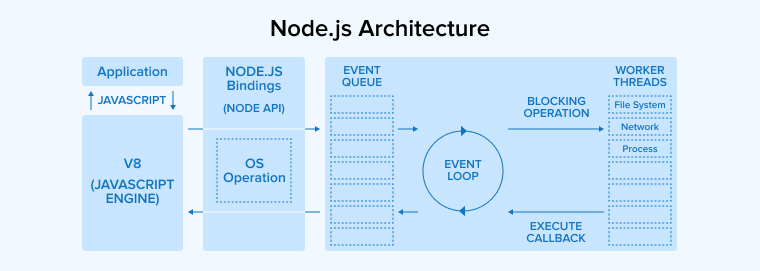
Node.js is popular because of its mechanics. Where other runtime environments use multi-threaded processing models, Node.js is an environment that uses a single-threaded event loop. When the environment uses multiple threads for processing, each server comes with access to the limited thread pool. That means every time the server receives a request, the thread is being pooled and assigned to a request.
But in the case of Node.js, a single-threaded event loop processing system is used. Single-thread architectures process all the requests with the use of a single main thread. This is done by utilizing event loops that help in running blocking I/O operations in a non-blocking manner. Basically, because of its single-thread architecture, Node.js can perform and scale more efficiently and quickly than the multiple-thread model.
1.3 Features and Advantages of NodeJS
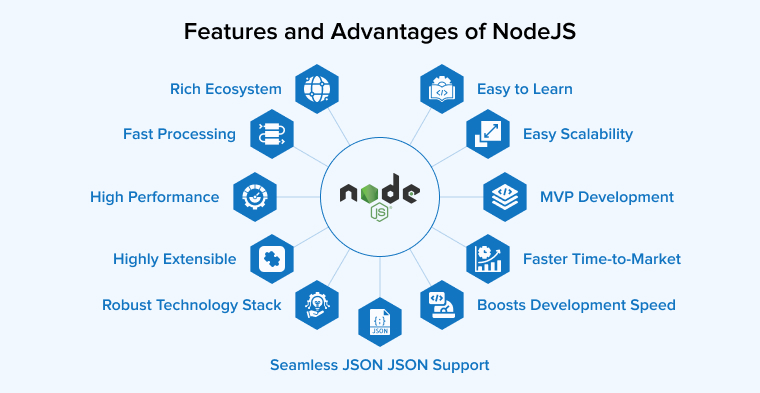
Node helps in the execution of browser JavaScript code and allows you to build scalable network applications. It operates on a single-threaded event-based loop for non-blocking executions and offers event-driven I/O previous API and asynchronous.
1. Easy to Learn
According to the js Foundation survey conducted in 2016, JavaScript is one of the perfect platforms for front-end development. Fortunately, JavaScript is a widely used language with powerful features. So, it becomes easier for frontend developers/web developers to start using Node.js at the backend as it is easy to learn and consumes less time to grasp over it.
Node.js has no learning curve and it is relatively simple and easy to learn with little knowledge of JavaScript and Object-Oriented programming.
According to a StackOverflow survey, more than 40% of the professional developers, which participated in the voting, elected js foundation as the most widely used technology.
As a beginner, you can also attend interactive courses, watch tutorials, and check examples on Github which makes your learning a really pleasant experience. Just make sure you’re aware of the client-server model, server moves, event-driven servers, and catch up with the Node’s asynchronous programming flow.
2. Rich Ecosystem
Node has a vibrant ecosystem with software known as NPM which allows you to access more than 800,000 libraries and new ones get published every week. NPM also serves as a marketplace for open-source tools and resources which plays a vital role in the advance of this technology.
There is a wider variety of free tools accessible in a few clicks that gives a huge potential for companies to use Node.js.
3. Easy Scalability
Node’s scalability is achieved by load balancing which can handle a huge amount of concurrent simultaneous connections. Offering scalability is one of the most common benefits for startups that are planning to expand their business over time.
It is perfectly suitable for microservices architecture that will scale and grow in the future. Moreover, Node apps support both vertical and horizontal scaling.
Besides, Node also provides the option of adding extra resources to one node during the vertical scaling of the web application. It is a highly scalable and ideal solution compared to other JavaScript scalable servers.
4. Faster Time-to-Market
For every business, time is priceless. Startups have to work relentlessly to iterate, test, deploy and deliver as quickly as possible. Node.js is particularly helpful in making the time-to-market cycle shorter.
Firstly, technology is lightweight and can massively decrease the development time in achieving the same functionality. With Node, you can get from idea to product in a snap and receive immediate feedback from the production environment.
5. Seamless JSON Support
Backend web application development technologies such as Ruby on Rails and PHP can use JSON format for interaction while creating RESTful APIs for NoSQL database support like MongoDB. Seamless communication with the data transfer standards is another benefit of the JavaScript runtime built.
6. Robust Technology Stack
Node.js is a JavaScript runtime environment that has proven to be an undisputed leader among the most popular programming languages. There are a total of 368,985,988 downloads and more than 700 new contributors, the project seems to be stronger than ever.
If you’re using Node.js for backend development, you automatically get all the pros of full-stack JavaScript development such as speed, performance, overall developer productivity, code sharing, easy knowledge sharing within a team, various free tools, and better efficiency.
7. MVP Development
Short budgets and harsh timeframes mean that it’s worth quickly validating the product marketability with the least effort and resources. Make sure to receive a full-fledged product before paying out money on the development, you’ll get ready before you take off.
Node.js allows web developers to quickly develop an MVP with just enough features so that the product can go to the market and satisfy the customers.
8. Highly Extensible
Node.js is cross-platform and highly extensible which means you can customize and further extend Node.js as per your project requirements. It also makes use of JSON and provides the scope of exchange of data to facilitate built-in APIs for creating HTTP requests, DNS, TCP, etc. traditional servers.
9. Fast-Processing and Event-Based Model
Node.js is one of the fastest cross-platform scripting languages and event-based models; it is not a myth. The V8 engine for implementing Node.js was originally developed for Google Chrome. It is written in C++ to compile functions written in JavaScript into machine code for impressive speed and performance. Thanks to Google for investing much time and effort in its engine, V8 demonstrates performance enhancements every year and extracts the whole bag of benefits.
Non-blocking I/O and asynchronous request handling provide Node.js the ability to handle requests without any delays. For backend development, synchronous processing assumes that the code is executed in a sequence. When a request is processed, it can push out serving requests and Node.js makes the most of single threading in limited time and concurrent processing.
10. High Performance
In Node, its V8 JS engine helps the developers to compile the Javascript code directly into the machine code and this apparently helps in making it resource-efficient and also accelerates the speed of the framework. Besides this, Google heavily invests in its search engine (Google chrome) which improves the performance quality of Node.js.
11. Boosts Development Speed
Node.js is an environment that enables the developers to accelerate the process of web app development process with its varied tools. In addition to this, the npm registry hosts numerous modules, solutions, and libraries to develop applications by getting more value and investing in less.
1.4 Cons of NodeJS
Following are the disadvantages of Node.js:
1. Immaturity of Tooling
Although the code Node cluster module is stable, mature, and more appealing than the child processes module for creating scalable servers. Various tools in the npm registry are poor or not properly documented.
Besides, the registry’s structure might not be accurate to offer the tools based on their quality. So, sometimes it becomes hard to find the best solution for your purposes without even knowing what to look for.
2. Handling Heavy Computing Tasks Reduces the Performance
It is single-threaded and event-driven I/O locking, Node falls short at executing heavy CPU-based computing and reduces the overall performance of your application.
When a sizable CPU-driven task, creating limited threads is received by Node in its event loop, it uses all the available CPU strength to accomplish the undertaking and hinder your applications’ interface.
To overcome such challenges, Node introduced the “worker threads” cluster module which allows the web developers to execute more than one thread simultaneous concurrent connections. Although, this solution does not allow you to deal with CPU-intensive operations and computation challenges.
3. A Simple CRUD Application
Node.js comprises basic HTML or CRUD hybrid web applications. This leads to an outcome that is slightly scalable, complex code execution and generates low traffic floods. However, use cases like this one, where return data is provided and the scalable servers don’t require a separate API, then render Node.js superfluous.
4. Lack of Library Support
Few NPM libraries are either poor in quality or not appropriately documented. This is why monitoring is difficult if some novice developer develops a web application in Node.js. Only experts and professionals with massive project experience can drive success to your project. Node.js is an open-source platform with such libraries and modules that might create a lack of high coding standards. So, it is essential to pick the right development partner to develop your web application.
5. Difficult to Maintain Code
Due to the core nature of the asynchronous approach, the technology replies a lot to callback functions. It operates each task in a queue safekeeping several queued tasks in the background that are still running. This callback function impacts negatively on the apps’ performance and code quality, also makes it tedious to understand and maintain the code.
1.5 Applications Made Using Node.JS
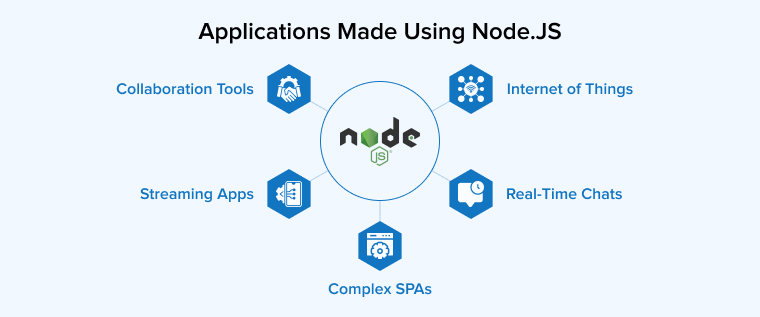
Following are the applications made using Node.js:
1. Internet of Things
IoT is a technology used as a network of devices such as sensors, beacons, actuators, and other items embedded with electronics that enable them to send and exchange data. Generally, IoT systems are responsible to pass data from devices to servers and then forward information from servers to applications for the users. And IoT might consist of various devices which might be challenging to maintain. For this, Node.js has been used with IoT. Node.js helps organizations to create both private and public IoT systems with amazing features and robustness.
Basically, the maturity of the Node.js ecosystem for IoT explains why IoT products are so successful. For instance, usage of Node.js in Skycatch.
2. Real-Time Chats
Real-time chats help users to communicate with each other through text, audio, or video messages. These types of chats can take the form of one-to-many group or one-to-one chats built on Internet Relay Chat (IRC) or Instant Messaging (IM) technologies. These days, real-time chats are used everywhere from commercial sites to social networks. And the use of Node.js with these types of chats offers all the required functionalities which makes complex apps easy. Besides, Node comes with a powerful event API that helps in creating various objects that periodically emit named events.
3. Complex Single-Page Applications
Single-Page Applications (SPAs) are very popular. The entire app fits on a single page with the required data and the best user experience. In SPAs, the client-side scripts are loaded on one HTML page which works as the entry point of the application and it also loads all partial scripts into the central template as per the requirement. In this case, developers used Node.js to make multiple requests to run smoothly from one page. Basically, with the use of Node.js, heavy I/O and handling asynchronous calls of these applications. This means that Node.js is the best for SPAs.
4. Real-Time Collaboration Tools
Real-time collaboration apps offer various solutions for project management, co-browsing, video and audio conferencing, collaborative editing of documents, application sharing, and more. In these apps, Node’s event-based architecture and asynchronous nature are the best fit. It can help in handling multiple events and I/O requests all at once.
5. Streaming Apps
Streaming applications are executed on the end user’s local machine and they enable users to download data demand without overloading the local computer and the server. In this case, the downloaded data is saved in the user’s account, and its request is initiated through the server. The server later updates the local app without too much network traffic. In this case, Node.js is the best choice and it is because of its native Stream API. It helps in streamlining the videos easily and efficiently in your mobile apps or browsers.
2. NPM: Node Package Manager
Node Package Manager is a command-line tool that installs or uninstalls Node.js packages in your application.
The Node package manager is the most prized possession of the Node community and it contains thousands of downloadable libraries according to the project requirements.
These libraries are free of cost with their registry and it is getting bigger rapidly, making the Node.js community stronger, and is also an online repository for open-source Node.
The npm repository is the largest software registry which contains more than 800,000 code packages to manage private development and provide useful functions to interact with the file system.
The latest version of Node.js 14.17.1 has some remarkable features, making it even more stable, enhanced performance, and improved diagnosis. This has made the life of the programmers more delightful by deploying extraordinary experiences for users.
Another important use for npm repositories is dependency management. When you’re working with a node project with a package.json file, run package manager install from the project root and it will install all the dependencies which are listed in the package.json.
With this, installing a Node.js latest version project from a git repo becomes easier!
For instance, a Node.js testing framework can be installed from git, and it can be automatically handled:
git clone https://github.com/cloudhead/vows.git cd vows npm install
Once you implement those commands, you can see the node_modules folders containing project dependencies specified in the package.json.
2.1 Benefits of NPM
NPM is an excellent tool for Node.js and JavaScript web developers that provides a quick and simple way to handle, install, and share npm packages. Some of the popular request packages allow developers to make HTTP calls and handle all the complexities of apache HTTP server calls into easy-to-use methods.
Here are a few benefits of installing npm:
- NPM manages local dependencies of the project’s tools.
- It offers package-lock.json which displays all dependencies of your project.
- It helps to manage globally installed project tools.
- NPM has the ability to handle multiple versions of code and code dependencies.
- You can use standalone tools right away.
- It installs multiple packages and supports core functionality.
2.2 Top Useful NPM Modules
Let us see some of the useful npm repository modules provided by the largest software registry to create a module by focusing on various elements such as performance, robust routing, core functionality, automating time-consuming tasks, high test coverage, and much more.
- Express.js
- Sails.js
- Meteor.js
- Hapi.js
- Koa.js
- Total.js
- Nest.js
- Loopback.js
- Mongo.js
- Socket.js
Find the most used libraries of node.js with brief description here:

3. Popular Applications Built with Node.js Include
Following are the popular applications built with Node.js include:
3.1 PayPal

PayPal is a popular online payment platform that enables users to make transactions very easily. The firm decided to use Node.js in the year 2013 for its application. The app developers had to write different codes for both the front end and the back end which was challenging. But Node.js solved this issue by enabling both the server and browser applications to be coded in JavaScript.
3.2 GoDaddy

GoDaddy, a leading domain registrar and web hosting company used Node.js to migrate its app’s back end to a full-fledged infrastructure of this technology. This helped the company in reducing its dependence on hardware. They started using 10x fewer servers for web hosting after shifting to Node.js.
3.3 LinkedIn

LinkedIn is a professional networking platform. It was using Ruby on Rails for its back-end but in 2011, it started using Node.js for its mobile-app backend. And as a result, its app became much faster.
3.4 Netflix

Netflix used Node.js for its video streaming app and creating the entire interface using this technology was the best decision for this firm. Node.js helped in reducing the app’s startup time by 70%.
3.5 Uber

Uber is a firm that handles millions of data requests in real-time. Using Node.js for its app made its data processing features exceptional. And this helped Uber in being the world’s leading application.
4. Final Thoughts
Node plays a vital role in developing server-side scalable & high-performing web applications built on Chrome’s JavaScript runtime consisting of modern features and multiple cores functionalities. It uses an event-driven, non-blocking I/O model which makes the system lightweight and efficient.
One of the biggest reasons behind the popularity of Node.js is that it uses JavaScript as its main language to build web applications. Being an open-source and easily accessible platform is like the cherry on the cake. Node.js is becoming incredibly popular for developing web applications for both web and mobile. It offers a perfect package of scale, speed, and performance which helps you to power use cases essential for web apps in 2022 and beyond. As long as your web app doesn’t require CPU-intensive tasks, it can leverage the advantages of Node.js that are shared in this article.


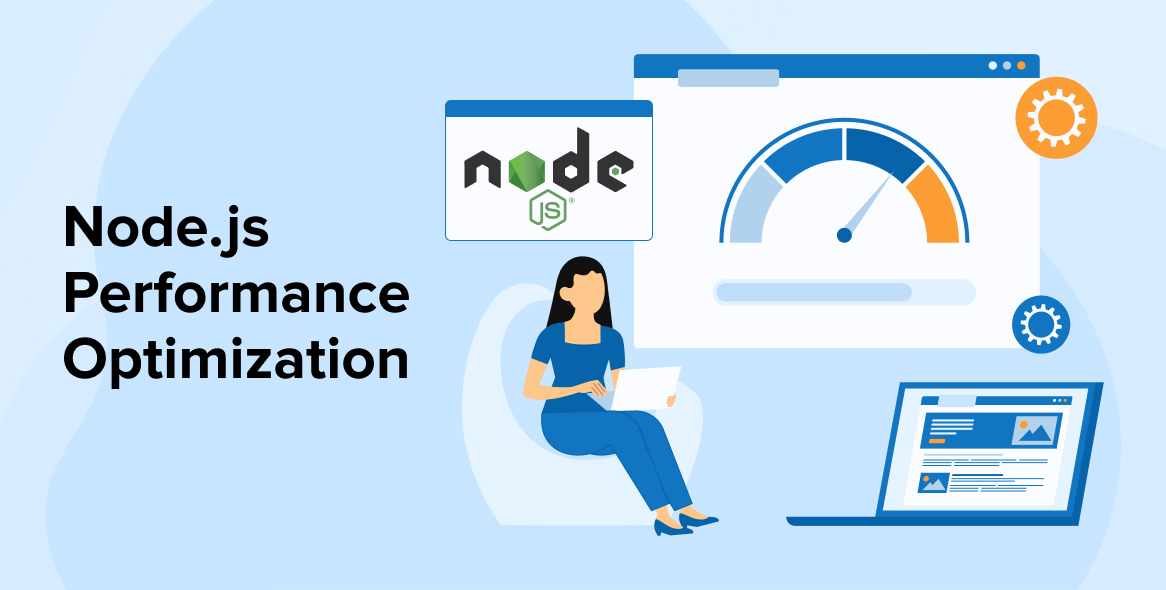

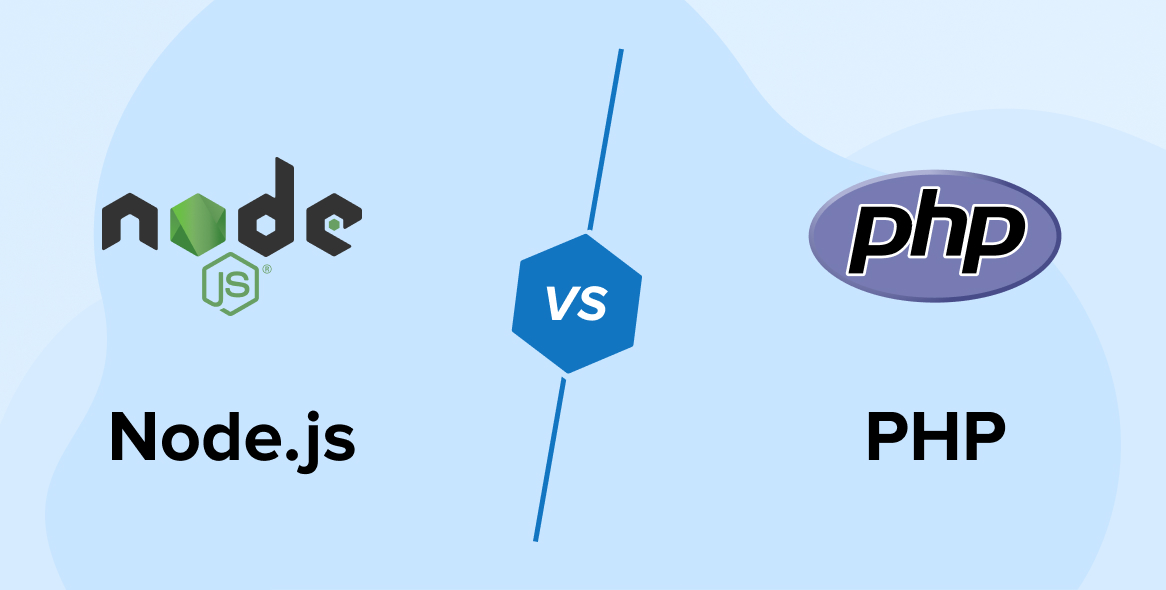

I am a newcomer to node.js, but after reading this article, I have good knowledge about node. Everything is explained in details, like what is node, the pros and cons of Node.js, its features, and many more things. I would really like to suggest this article to my colleagues.
This article explains exactly what Node.js is and also gives information about some applications that are built using Node.js. Thank you for sharing this valuable and enlightening information.
This blog is an excellent source for learning about Node.js and its fundamental concepts. It's a great tool for newcomers and anyone trying to learn the basic concepts of Node.js. Thanks for sharing this valuable information!